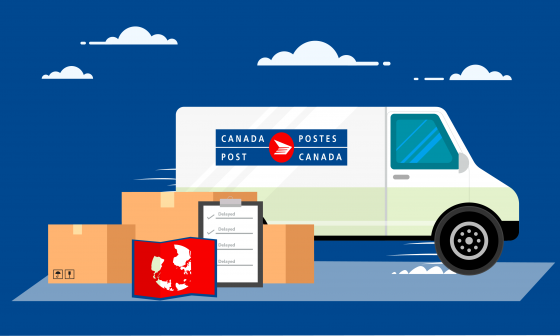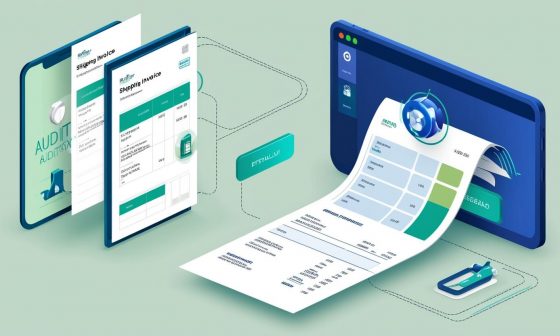The successful negotiation of a FedEx/UPS contract with your shipping partner depends on several factors.
Before getting into a negotiation, you need data on their performance metrics, the impact of their service, their clientele, and more.
Besides, if shipping prices get too high, you need to overhaul your shipping strategy. Your ability to negotiate can make a huge difference in various aspects of the final contract.
The following 10 tips will help you negotiate a contract like a pro:
1. Use analytics before chalking a strategy for the UPS/FedEx contract negotiation
Before starting the negotiation process, you may receive multiple proposals with various pricing quotations from each carrier. Make sure to go through each proposal thoroughly to understand the financial impact it will have on your operations and expenses.
Some of the crucial aspects of each offer would know how they would affect the average shipping cost per parcel, per zone, per service level, and pound. Besides, you should be able to calculate the annual savings in terms of percentage (%) and amount ($) for your company.
The contract negotiation process for FedEx and UPS is unique. It is because the clauses of a contract are specific to a shipper’s profile. You need to know which areas of a contract are the most impactful, and you need to discuss them first, including the concessions in your favor.
2. Set SMART Objectives before Negotiation
Set the following goals to get favorable outcomes from a shipping contract negotiation:
- Specific: Set a clear savings goal in terms of amount and percentage during the rate negotiation process with your carrier.
- Measurable: Figure out how things like new rules or pricing can affect your future savings.
- Attainable: You need to keep a realistic goal for your savings, which is appropriate for you and the profile of your shipper.
- Relevant: Ensure that the improvements you are pursuing in a contract are related to your logistics KPIs.
- Timebound: Set a timeline that is realistic for your business and understand the challenges that may come in the way.
3. Minimum Tiered Pricing
Shippers are often more concerned with their pricing tier because getting to the next tier will bring down their cost. However, it is difficult for you to anticipate the cost savings through a tiered pricing approach because you get the tiered pricing quotes customized to your business. Besides, the shipper may already set the tiers to benefit the bottom line of their business. You need to negotiate at this point, but be delicate and careful while negotiating.
4. Discuss the Surcharges
If you check your shipping invoice, you will have an idea of how many additional cost components are in the bill. You may find various surcharges in the invoice. For example, oversized parcels, fuel hikes, residential zip codes, and various other aspects attract surcharges.
Different carriers impose their own set of surcharges and have their own terms and conditions. You need to identify the charges that do not apply to your business and filter them out during the discussion.
A couple of examples are below:
- Delivery Area Surcharges: You cannot control where your customers live, but you can negotiate on the flat fee that a shipper may charge when you are shipping to one of the ZIP codes listed on the FedEx/UPS surcharge list. These lists have grown by nearly 10 percent for 2020, so you may still have to pay more. Both FedEx and UPS have increased the cost of this surcharge this year besides adding more ZIP codes. Do not forget to negotiate this to keep your surcharges to a minimum.
- Additional Handling Surcharges: Keep your eyes open for some additional surcharges. Depending on your product or service, there could be some of these surcharges added to your invoice. During the negotiation, get complete clarity on every possible charge and identify the ones that do not apply to your business to lower your overall cost.
You may read the entire list of surcharges that may be applied to your shipping invoice.
5. Dimensional (DIM) Weight
Both FedEx and UPS have shifted to dimensional weight for billing in recent years. Earlier, they used to bill parcels according to the actual weight. As per the new rule, the billing of a parcel will depend on its dimensions. It is considering the space a package occupies in a container.
The charge for dimensions is hard to track for most shippers. Simply put, the dimensions of your parcel can put your shipment into higher weight tiers and will be more costly. Carriers want to maximize the number of parcels, which they can fit in a vehicle to have the most revenues. This is why shippers prefer small and dense boxes. Shippers use a formula to calculate the space a parcel may occupy (called DIM weight), and they will charge you for the excess of your actual parcel weight or DIM weight. If you see a significant charge during your discussion, try to negotiate a lower rate.
6. Keep Your Right to Refund
You should make sure not to give up your right to refunds through the carrier’s money-back guarantee. Regardless of the discounts that a shipper may offer, your business must hold the shipping carrier accountable for your package delivery and claiming refunds for delivery exceptions.
Remember that you have the right to a full refund of your shipping bill if your carrier is unable to deliver parcels in the promised time. This can lead to significant savings if you follow the process diligently. Make it a part of your negotiation.
Due to COVID-19 FedEx and UPS have temporarily suspended the money-back guarantee.
7. Protect Your Interest against Sudden Increase in Rates (including Holiday Rates)
FedEx and UPS are known for suddenly increasing their rates, citing various reasons. You can bring up that point during the negotiation and ask for protection against such abrupt rate spikes.
Holiday seasons are the most hectic period for e-commerce and shipping. Due to huge volumes, shipping carriers increase rates and temporarily stop the money-back guarantee during these times. While negotiating, you should ask for a money-back guarantee during the holiday season too.
8. Read the Contract Clauses Carefully
Before the negotiation, your shipping carrier may promise several things besides delivering the parcels on time. However, before signing the contract, carefully read the clauses or the fine print for subtle languages. The contract of FedEx or UPS may have various conditions, and you need to understand how those conditions may affect your business. This is why take time in going through the contract, as it can give you an advantage while discussing terms and conditions during the negotiation.
9. Watch Out for More Savings
The pricing you set through a shipping contract is a crucial area of your retail business, and it influences your overall revenues. When the underlying structure of your business takes a new shape, it changes your shipping requirements, and the services of your carrier will change too.
Watch out for opportunities to save more costs, which may come up at the beginning phase of a new contract. Besides reviewing the shipping data of your own business, check for changes in the industry by going relevant articles to get more ideas on making changes to bring down the overall costs.
10. Periodically Review the Contract
Review the shipping contract from time to time and try to find out a solution, which will benefit both parties. Make sure to review the contract before every renewal.
The timing of reviewing the contract could be monthly, quarterly, or half-yearly, depending on the following factors:
- The number of parcels you send.
- How many times the shipping carrier changes rates, and how it affected your business.
- Other areas that you feel need more discussions.
If you do not keep yourself updated on changes by your carrier or negotiate your contract accordingly, maybe you are paying too much.
Before We Go
Similar to other relationships, your business relationship with your shipping carrier will depend on your interpersonal skills and mutual respect. An amicable relation from the beginning will help you get better deals and run your business seamlessly. This rapport will help you negotiate the contract better rather than a stern and critical approach.
AuditShipment’s shipping intelligence platform helps businesses identify refund opportunities and potential avenues for additional savings. At AuditShipment, we arm businesses with powerful shipping data analytics to level the ground when it comes to negotiating rates with FedEx and UPS.






